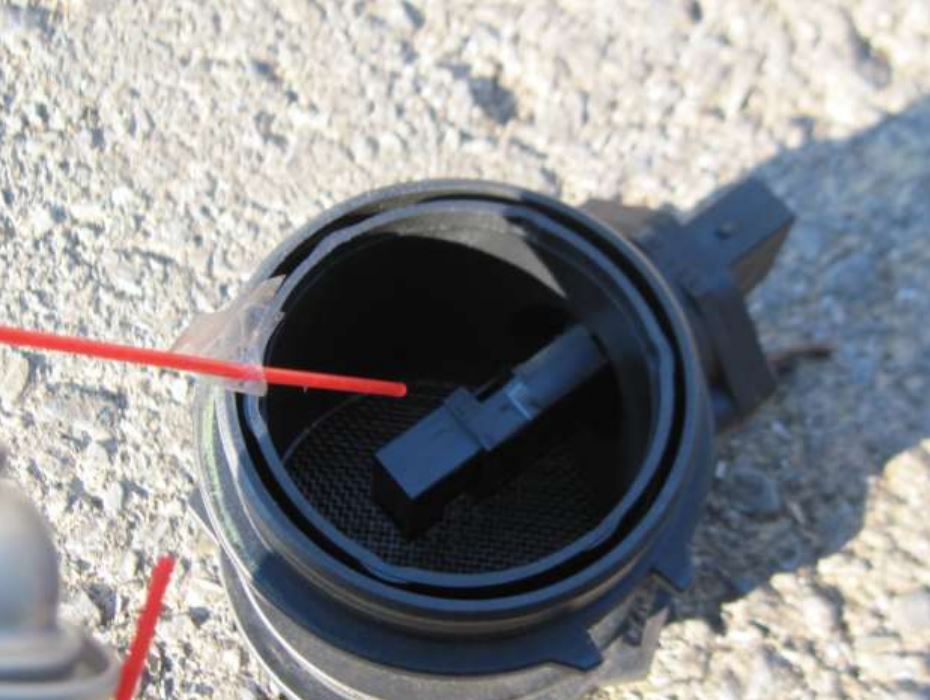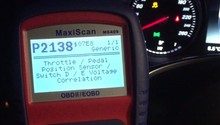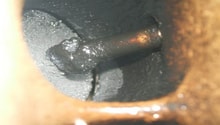Mercedes-Benz E-Class and E-Class AMG: Why is My Car Jerking?
The Mercedes-Benz E-Class is supposed to be a very smooth car, so jerking means something is wrong. Learn how to diagnose it here.
This article applies to the Mercedes-Benz E-Class and E-Class AMG w211/w212 (2002-Present).
The Mercedes-Benz E-Class is one of the smoothest cars on the road today. Every now and then, things could go wrong and jerking could be the result. Connecting a scanner to your car can probably give you a code that tells you the source of the issue. A dirty MAF (Mass Airflow) sensor is another common cause for a jerking Mercedes-Benz, in which case, cleaning it can solve the issue. Learn how to diagnose the problem here to avoid getting ripped off and overpaying.

Materials Needed
- MAF cleaner spray
- OBD-II reader (cable and computer software)
- 5mm Hex bit
- Socket wrench
- Small screwdriver
Step 1 – Read faulty codes
If your "check engine" light is on or has been on at an earlier time, there are probably faulty codes to read using the OBD-II socket in your car. These faulty codes might tell you what the problem is with your car. To be able to read the faulty codes, you need an OBD-II cable connected to your computer and also a computer software to present the faulty codes. You can also get a scanner from places like AutoZone, as they lend them out free of charge. There are a large variety of OBD-II readers on the market. If you are buying an OBD-II reader (cable and computer software), make sure to get one that can read all the faulty codes that you need on your car. Generic faulty code readers usually do not read car/make specific codes.
Another alternative is to go to a garage and let them read the fault codes for you.

Step 2 – Check MAF sensor
The MAF sensor moderates how much air flows into the engine. This information is then used by the on-board computer to calculate how much fuel is needed. Sometimes, the MAF sensor gets contaminated or breaks, and gives the computer an incorrect measure of the amount of air flowing into the engine.
If there is something wrong with the MAF sensor, you should get some appropriate faulty code with the OBD-II reader. You could try and remove the MAF sensor to clean it with some special MAF cleaning spray, and see if the fault code goes away. If you are unsure if the fault code is related to the MAF sensor, you could clean it just in case. It is very cheap and it's a great piece of maintenance to do.

Figure 2. Location of the MAF sensor. 
Figure 3. Clean the MAF with MAF cleaner spray.
Step 3 – Check the transmission
On cars built in 2003 and 2004, the radiator built by Valeo (cooling both the engine and the transmission) is prone to breaking in the connectors. This could lead to coolant fluid leaking into the transmission oil. If the coolant is allowed to stay in the transmission oil for a prolonged time, it could potentially ruin the transmission entirely.
There is a bulletin issued by Mercedes-Benz describing how to check for glycol contamination of the transmission oil. Basically, what you need to do is to drain some transmission oil from your car and test the oil using a specific procedure. The drain plug is removed using a 5mm Hex bit. The bulletin is available below in the Related Discussions section. The best alternative is to let an experienced Mercedes-Benz mechanic make the transmission oil analysis.
The repair could include flushing/replacing the transmission oil, replacing the radiator, and possibly replacing the torque converter in the transmission.

Related Discussions
- Jerking Car - MBWorld.org
- Why is the Car Jerking - MBWorld.org
- MAF Removal and Cleaning - MBWorld.org
- Glycol in the Transmission Oil Bulletin - MBWorld.org
- Transmission Oil Change - MBWorld.org
- Glycol Contamination - MBWorld.org






